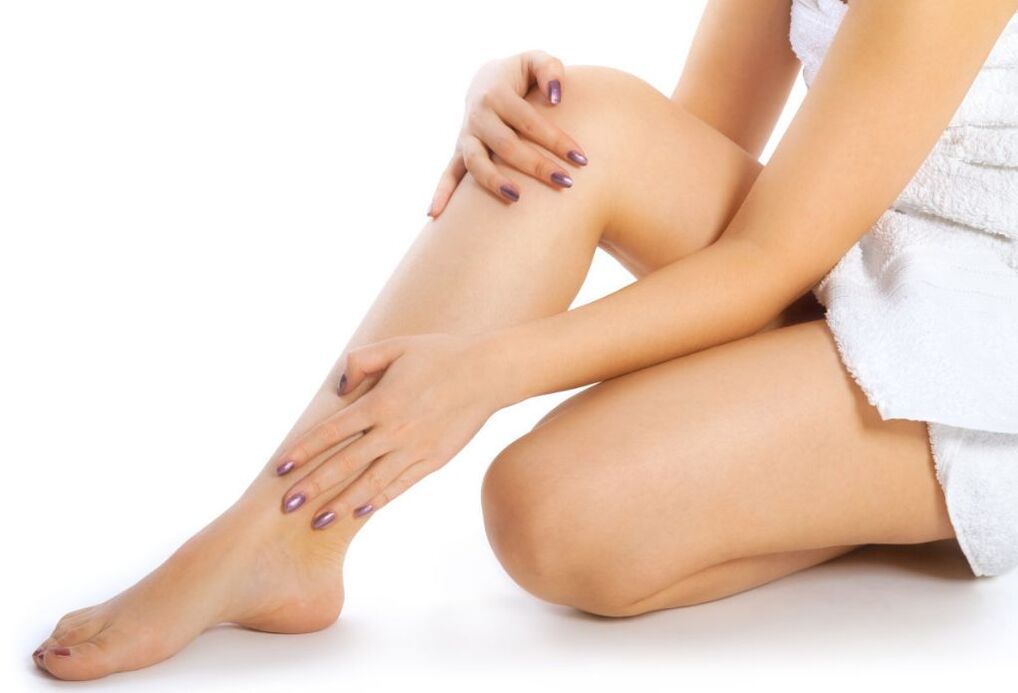
Problems with blood vessels are a fairly common phenomenon that is becoming more and more common in modern society.Currently, varicose veins of the extremities are diagnosed only in elderly people.The disease affects young people and even children.
What are the symptoms of varicose veins in the legs, arms and other parts?It is very important to know the first signs of the disease.The effectiveness of subsequent treatment depends on timely diagnosis.
This article will be devoted to the symptoms of varicose veins in the body and other parts of the body.We will also talk about the causes of diseases and the necessary preventive measures to prevent the development of the pathological process.Of course, we will focus on all kinds of methods to treat varicose veins in legs, arms or other organs.
It is believed that this disease affects only the limbs of the human body.But this is not true.Recently, doctors are increasingly diagnosing varicose veins of the small pelvis in women.Pathologically, it is also found in the veins of the hemopagus and other internal organs.How to identify and treat such anomalies?Let's find it.
Definition of disease
Before learning what the disease is, it is necessary to get general information about the structure of the human circulatory system.
As you know, the blood in our body circulates through the veins.Arteries are blood vessels that carry blood to various organs and tissues.Veins are also vessels, but they carry blood to and from the heart and tissues.
In order for this process to occur in the correct direction, each vein has a one-way valve.They provide the necessary blood circulation in the right direction.What else can be achieved with such valves?Blood does not accumulate in one place, but circulates and enriches the body.
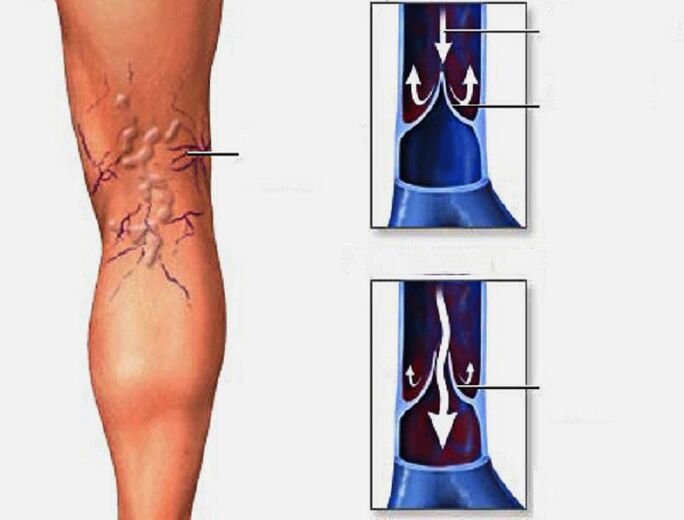
Varicose veins are characterized by damage to intravascular valves or even their complete absence.As a result, the general blood flow is disturbed and accumulates in the place where the pathology is detected.Because of this, the veins increased in volume and expanded abnormally.
There are several types of veins in our body - superficial (located immediately under the skin), deep (deep in the muscle tissue) and communicating (combining the first two types).
Most often, varicose veins are diagnosed in superficial veins, for example, on the legs, knees, calves or thighs.But the disease can also affect vessels located in the pelvic or rectal area.
Lower limbs
First, let's pay attention to the varicose veins of the lower extremities.Externally, the disease irritates and extrudes itself in the form of purple, blue or blue or blue-green veins.Similar manifestations can be seen in the photo below.
Causes of varicose veins of the legs
As mentioned above, the main cause of the disease is pathological processes occurring in the blood vessels.What can happen to such changes?
The main provocateurs of the disease include a hereditary tendency to vascular deformation.Also, excessive loads on the legs, for example, due to professional employment or constant standing or walking, can have a negative effect on a person's blood vessels.It is not surprising that teachers, athletes and hairdressers are prone to this disease.
Other negative factors that affect the elasticity of blood vessels are excess weight, hormonal changes and cardiovascular diseases (for example, thrombosis).
Do not forget bad habits that have a negative effect not only on the veins, but on the whole body.It is clear that smoking and alcohol abuse can well provoke the development of the pathological process in the blood vessels.
Often, the development of the disease can be triggered by pregnancy, which is a great stress and burden for the whole woman's body.Also, carrying a baby affects the hormonal background of a baby, which can also cause pathological processes in the circulatory system.But it is worth remembering that pregnancy is not the cause of varicose veins.A fetus may be the cause or one of the causes of the manifestation of the disease.
It is no secret that the disease is most often diagnosed in women, and it is not always related to pregnancy or hormonal changes.Uncomfortable shoes (with too narrow or too many syllables) are one of the main reasons for the development of varicose veins of the lower extremities.
An important factor in the development of abnormal expansion of blood vessels can be various damage to the vessels.It can include injuries or inflammatory processes in the vessels, as well as the formation of blood clots.
How to identify the disease at an early stage in order to start timely and high-quality treatment?Let's find it.
Details about symptoms
The first sign of a problem is pain in the legs, which is where the valve disorder occurs.It is also very important to pay attention to unpleasant sensations in the lower extremities, as if the leg was heavy.This feeling is an important signal of vascular deformation.
Abnormal outlet of the vessels is another sign of the development of pathology.Veins of dark purple color appear under the skin, twist and swell.
The skin in the affected vessel area becomes dry, peeling, itchy and itchy.At the site of the development of the pathological process, edema forms, the skin swells or swells.
If you do not take time for these manifestations, the symptoms may intensify.A person begins to open in the form of cramps and obvious ulcers in the area of varicose veins, which can be bloody and painful.Wounds are prone to infection, so you should see a doctor as soon as possible to avoid complicating an already difficult situation.
Identification of the disease
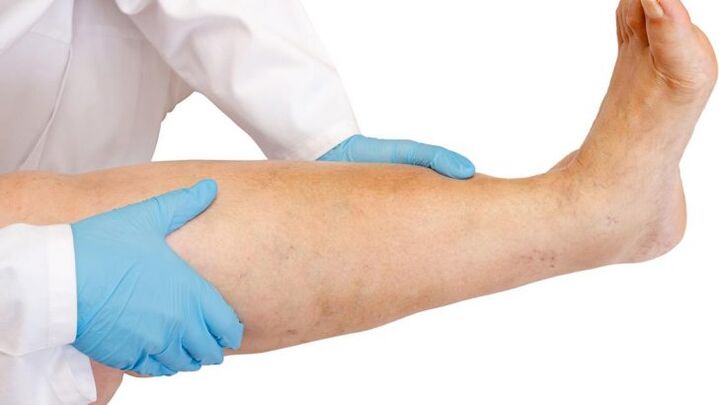
What will they say at the hospital?Most likely, a specialist will refer you for the necessary examinations to diagnose the disease and rule out other diseases.
The most important diagnostic step is the physical examination of the patient.The patient will be asked to stand, sit, and swing their legs.This diagnosis will be made on the basis of an external examination.
The doctor may then recommend a possible Doppler ultrasound to examine blood flow and detect a blood clot, if any.
An angiogram can be prescribed by a specialist.This study involves injecting the vein of this case, which will be clearly visible on the X-ray of the structure of the vessel and their pathological changes.
Recovery title principles
Is it possible to treat varicose veins at home?Yes, especially when it comes to the initial stages of the disease.
The first thing the doctor will advise is to adjust your weight and nutrition program.That is, if a patient has extra pounds, he should go on a special diet to normalize his body weight.If the patient's weight is normal, then he should follow his diet, avoiding fatty and salty foods, which can have a negative effect on blood vessels and can also cause obesity.
Moreover, a therapeutic diet can give up strong coffee (and sometimes tea), smoked foods and canned food.Alcoholic drinks are also 100% contraindicated for people suffering from varicose veins.It is very important to eat more vegetables and fruits (including freshly squeezed juices), whole grains and soybeans.Of course, don't forget about the greens.Parsley, dill and lettuce will help you overcome any disease!
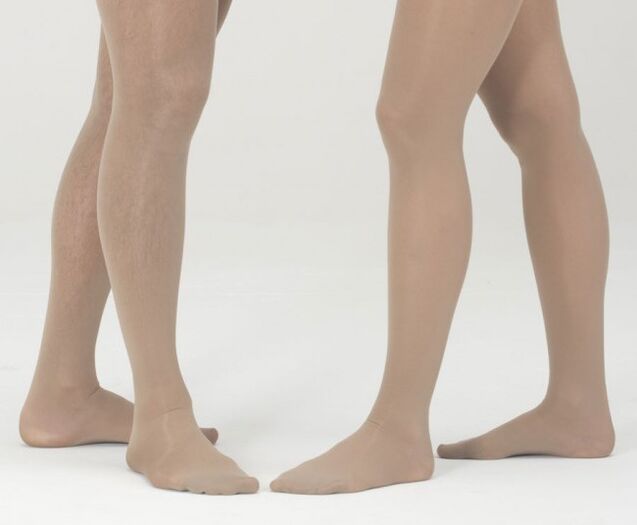
Your doctor may also prescribe compression garments such as stockings or even stockings.
Many men may have complexes about such an unusual treatment for varicose veins in the legs.But you shouldn't get hung up on this problem.Compression garments are a fairly common method of treating vascular pathologies of the lower extremities.Its vocal use will not only relieve the patient of unpleasant symptoms and pain, but will help prevent the progression of the disease.In some cases, such a garment will be recommended to the patient for lifelong use.Very often, it is prescribed to pregnant women to alleviate their condition during pregnancy, when the body cannot help in any way.
The essence of this therapeutic underwear is that it compresses the foot in the area of the ankle, which weakens the effect on the bare foot.This stimulates proper blood circulation to the heart.
Currently, you can find different compression socks and densities, differing not only in size, but also in the degree of compression (pressure).
Another way to treat varicose veins is to prescribe special exercises for the legs.The specialist recommends certain exercises that will help normalize blood flow in the extremities.
Let's move on to drug treatment
To combat the disease, special ointments and oral medications can be prescribed, the purpose of which is to thin the blood and improve circulation.Also, such drugs can strengthen the walls of blood vessels, relieve inflammation and relieve pain.
Often, doctors prescribe phlebotonics (or venotonic drugs).They improve lymphatic drainage, strengthen the walls of blood vessels, give elasticity and reduce capillary permeability.
The patient may be prescribed antiplatelet agents, which disrupt clots and improve blood flow by promoting blood flow and suppressing adhesions.
During the exacerbation of the disease, it is very important to take drugs that prevent blood clotting.For this purpose, the attending physician can prescribe drugs based on heparin or its derivatives.
According to experts, it is better to use non-steroidal anti-inflammatory drugs.
Of course, we must not forget about ointments.Local drugs are presented in large quantities in the pharmaceutical market.
A more radical treatment
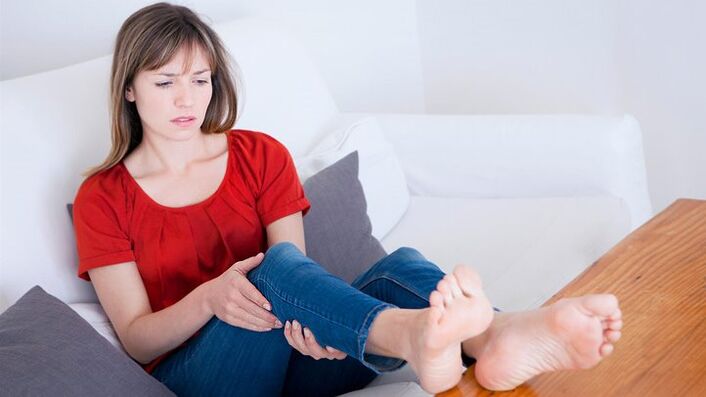
The methods described above do not always achieve the desired result.
In such cases, your doctor may recommend non-invasive treatment options.What do these include?Let's discuss each method.
Laser treatment
One of the most subtle methods of treating varicose veins is the use of a laser on the surface of the epidermis.A small light that illuminates the walls of the dam promotes the development of sclerosis, as a result of which the affected vessel disappears, as if it were removed.
Venovenous laser coagulation is another procedure for treating varicose veins.However, it involves making a small incision somewhere above or just below the affected vein.Then a catheter is inserted into the vessel and an ultrasound is sent.The laser action lasts for about a minute, after which the patient feels heat in the area of the affected vein, being a part of the tissue that joins after a certain period of time.
Because the patient is given local anesthesia before the procedure, the person feels absolutely nothing.After the manipulation, a feeling of heaviness in the lower extremities and bruising may occur.However, this does not affect the recovery period in any way.The next day, the patient can go to work and carry out his usual activities.
Radio frequency
In addition to the laser, the ablation method can be used, which is carried out in the same way as the laser coagulation described above.The only difference is the equipment used.Instead of a laser, the specialist uses radiofrequency energy that enters the affected vessel through a catheter, heats up to the walls of the vascular bed and closes it.After that, the blood is directed in another direction - a healthy vessel.
Surgical intervention
It involves total or partial removal of the affected vessel.Surgery for varicose veins is prescribed only as a last resort when other treatment methods have failed.Surgeons use a variety of surgical techniques to treat varicose veins.Some of these will be listed below:
- Crossectomy.
- Vascular removal.
- Miniphlebectomy.
- Endoscopy.
The essence of these manipulations boils down to the following.Small incisions are made in several places (most often below and above the affected area, and a thin wire is removed from the diseased vein. These operations are performed quite often, and almost always they occur without complications, but they cause certain risks and inconveniences.
For example, such surgical interventions are performed under anesthesia (general or spinal).The use of anesthesia can cause allergic reactions to the drugs used, bleeding and breathing problems.
Other adverse factors that may occur after surgery include infection, bruising and swelling in the affected area, irritation of the veins, irritation of the veins or the formation of blood clots within the veins.We must not forget that this surgical intervention does not guarantee the absence of recurrence in the future.
The postoperative period does not last long.Within a day or two, the patient can resume daily activities.He will recommend wearing compression garments for a week.
Sclerotherapy
This is one of the treatment methods for varicose veins, which should be considered and can be performed directly in the doctor's office without hospitalization.During the manipulation process, a special chemical solution is injected into the patient's vein, which acts as an irritant, which thickens and closes the vein.After that, blood circulation is carried out through healthy vessels.
This procedure is applied when a small vein in the knee area is affected.Sclerotherapy is usually combined with other methods of treating varicose veins.
Various drugs are used as a chemical solution.After the procedure, the patient must wear compression bandages soaked in a sclerosing agent.The cleaning period will be determined individually by the attending physician.
Side effects of such injections include the following negative manifestations:
- The appearance of blood clots in other vessels of the lower extremities.
- Headache.
- Painful sensations in the lower back.
- Temporary vision.
- Don't faint.
- Irritation of the epidermis around the injection.
Still, most patients tolerate sclerotherapy well.If the contraindications are taken into account and the manipulation is performed correctly, a positive result in the treatment of varicose veins is guaranteed.
People's first aid kit
Is it possible to cure a disease using alternative medicine?In some cases - yes, especially if we are talking about the main manifestations of the disease and if the treatment with the grandmother's method will be carried out with the permission of the occupational doctor.
So, what components should you collect to start effective treatment of the pathology?First, let's take apple cider vinegar.Mix two teaspoons of the product in a glass of water, add some honey and drink it in the morning on an empty stomach.
Apple Cider Sirkear, once dissolved in water (1 to 10 ratio), can also be used for topical application in the form of a rub.Gently rub the affected area at night - unpleasant symptoms should subside by morning.
Very often, chestnut tincture is used against varicose veins.To do this, collect beautiful and whole fruits and grind them through a meat grinder.Then fifty grams of raw materials are poured into a half-liter bottle of vodka and placed in a dark place for two weeks.After that, the tincture is filtered and half an hour before meals three or four times a day and orally, thirty to forty drops.The course of such treatment is one month.Then take a break for two weeks and repeat again if necessary.
This tincture can also be used to poach the affected area at night.
An ancient method of getting rid of varicose veins is the use of leeches.How much hirudotherapy is needed by the patient and his doctor in each individual case.
Thus, we paid enough attention to the varicose veins of the lower extremities.Now let's talk about other types of diseases.
Pelvic veins

This pathology is easily confused with gynecological diseases in women.
Varicose veins in the pelvic region can be considered as hormonal disorders, pathologies of the genitourinary system or ordinary radiculitis.But it is very important to identify the disease as early as possible.Varicose veins of the pelvis in women can cause a disturbance in the functioning of the ovaries and the entire circulatory system.
What are the causes of these intimate diseases?
Disease provocateurs
The main reasons for the development of the disease are difficult pregnancy, regular high-intensity physical activity, a sedentary lifestyle, some gynecological diseases, long-term use of hormonal drugs, dissatisfaction with sexual life, etc.Varicose veins of the pelvic veins most often occur against the background of an increased amount of estrogen.Of course, do not forget that excess weight and bad habits do not improve, but worsen the situation.
How to identify such a disease?
This is an important symptom
First of all, pelvic varicose veins manifest themselves in pain of varying intensity from sexual intercourse, physical activity, or prolonged or long-lasting pain in the same position.The disease is characterized by pain, swelling, and redness of the vulva or perineum in this area, often with urine.
A few words about treatment
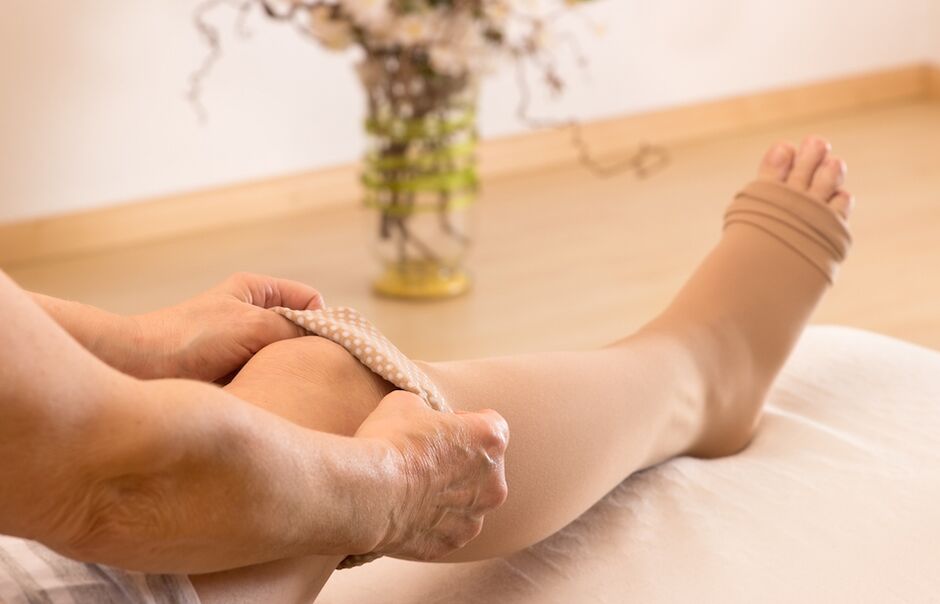
How to get rid of pathological dilatation of pelvic veins?First, you need to contact a specialist.May recommend wearing compression garments and special gymnastics (these are well-known exercises performed in a supine position - "maple", "scissors" and "bicycle").
Among folk methods, Dandelion or Chaga root, as well as chestnut tinctures, have proven to be the most effective.
What about another type of varicose veins - pathology of the gastrointestinal tract?
Digestive organs
Esophageal varicose veins are not a very common disease;Most diseases are a selected symptom of part of a more serious disease.
Why does such a pathology occur and how can it be determined?
Briefly about the causes and symptoms
The main causes of the expansion of the vessels of the esophagus are blockages in the vessels of the liver caused by thrombosis or cirrhosis.This pathology is diagnosed mostly in men, as well as in patients with serious chronic diseases, especially patients over fifty years old.How to determine the disease?
Varicose veins of the esophagus are most often manifested by heartburn, heaviness in the abdomen, difficulty in swallowing and memorization.Sometimes patients can show external signs of a pathological process - blood vessels and veins exit in the front wall of the abdominal cavity (abdominal cavity).
Often, the disease is diagnosed during a crisis, that is, a rupture of a vessel and bleeding walls occur.In most cases, bleeding is accompanied by vomiting (with blood), low blood pressure, general weakness, ring speed and bloody discharge (or impurities).
If such symptoms appear, you should definitely take a blood test and take an X-ray (with the use of special contrast solutions).
Treatment of esophageal pathology
Most often, treatment for this disease is carried out in intensive care.In the case of bleeding, the first task of doctors is to eliminate it.For this purpose, astringents, colloid solutions and hemostatic agents can be used.In some cases, doctors recommend transfusion of blood or its main components (or blood substitutes).
If the methods listed above do not work, specialists may consider it appropriate to perform esophageal surgery or sclerosis.After recovery, the patient must follow a fairly strict diet for the rest of his life.Proper nutrition includes eating split meals, avoiding greasy, salty and fried foods, avoiding hot or very cold foods, etc.
Prevention
It is known that the disease is easier to cure.What measures should be taken to prevent the pathological process in veins?
First - a healthy lifestyle!A reasonable diet, moderate physical activity, getting rid of bad habits, wearing comfortable shoes and clothes - all this will help not only to improve your well-being, but also to avoid many serious diseases.Good health to you!


















